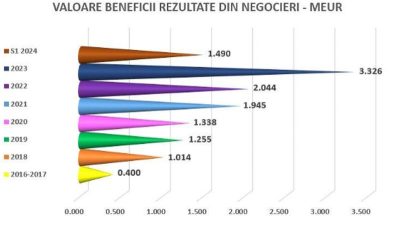Dimitrios Goranitis, FSI Risk & Regulatory Advisory, Partner, Deloitte Central Europe
As part of its role as the central resolution authority within the Banking Union, the Single Resolution Board (SRB) has set its expectations for banks in the resolution planning phase, to demonstrate that they are resolvable and prepared for crisis management. Banks are expected to build their capabilities by 2023, based however, on a phased-in process, which implies that some aspects related to liquidity and funding are required and will be assessed during the 2021 resolution cycle.
Liquidity and funding in resolution is on of the 7 dimensions that shall be assessed in the resolvability process. In this regard, it is expected that banks establish processes and develop capabilities to (i) estimate the liquidity and funding needs for the implementation of the resolution strategy, (ii) measure and report the liquidity situation in resolution and (iii) identify and mobilize available collateral that can be used to obtain funding during and after resolution. The guidelines on liquidity and funding in resolution focus however only on the first point, which is expected to be implemented and will be assessed in 2021. This document will be updated in 2022 to cover the remaining principles.
As a first step in the estimation of the liquidity and funding needs, banks shall identify the key liquidity entities (KLE) and main liquidity flows in resolution. In order to be classified as a KLE, one of the following situations should be expected in resolution:
• the entity/organizational form is expected to provide liquidity to other resolution group entities in order for them to perform their activities;
• the entity/organizational form is expected to depend on liquidity received from other resolution group entities to perform its activities; or
• the entity/organizational form performs liquidity management functions for one or more entities of the resolution group.
If, however, certain legal entities within a group which are considered relevant, but are not deemed KLEs, Banks are expected to justify why such entities do not impact liquidity management and the position of the group in resolution and how the liquidity of these entities would be managed in the event of resolution.
Based on the identified KLEs, banks should provide an analysis/map of the liquidity and funding set-up for the group in resolution. The guideline describes the main points that should be covered in this analysis. The following step implies the identification of the key drivers of the liquidity position in resolution, at both the resolution group and at the level of the main KLEs. Key drivers represent factors that are expected to trigger a substantial deterioration of a bank’s liquidity position in resolution. The key drivers should be identified in different resolution phases:
a) in the run-up to resolution ((i.e. weeks / month(s) ahead of the resolution weekend),
b) in the short-term after resolution (i.e. week(s) and during the stabilization phase, thus at least for a period of six months after resolution).
Banks are expected to perform this assessment considering different time buckets before and after the resolution weekend (e.g. on a weekly basis when closer to the resolution weekend and monthly otherwise).
Every identified key driver of the liquidity position should be assessed in relation to each specific time bucket by assigning an individual relative score (e.g. high/medium/low). This individual score represents the relative importance of each driver for the liquidity position of the bank for each specific time bucket, taking into account both the relative size/importance and the probability of occurrence.
Banks can use the risk identification performed in the ILAAP and the Recovery plan for the purpose of the identification of the key drivers. However, banks should consider how the risks identified within the going concert scenario will change under the resolution scenario.
Subsequently, banks are expected to estimate the liquidity position in resolution. For this exercise, they can use several methodologies that are already implemented for other purposes (e.g. stress testing, recovery planning, etc.), but they should be adapted to be resolution-specific. Banks should consider that this is not a pass/fail exercise and that the estimation of a negative liquidity position is an acceptable outcome.
The methodologies used should also consider further aspects, such as: counterparties’ behavior in resolution, ensure that their estimations take into account the financial means necessary to continue providing services needed to support the performance of critical functions and core business lines, should allow for the estimation of intraday liquidity needs, should consider the impact of rating downgrades, be able to estimate the liquidity value to be generated from marketable and non-marketable assets, consider
legal, regulatory and operational obstacles to the transferability of liquidity between KLEs, etc.
The methodology used to determine the liquidity position in resolution should consider a minimum of two resolution scenarios: a slow-moving and a fast-moving scenario, triggered by an idiosyncratic event, involving a mix of solvency and liquidity depletion. The assumptions should be based on expert-judgement or available literature and adjusted to a resolution-specific scenario. While the scenario work developed by banks for recovery planning can be used as a starting point, banks are expected to apply their methodologies
to resolution-specific scenarios. Scenarios should be tailored to each bank’s business model.






COMMENTS